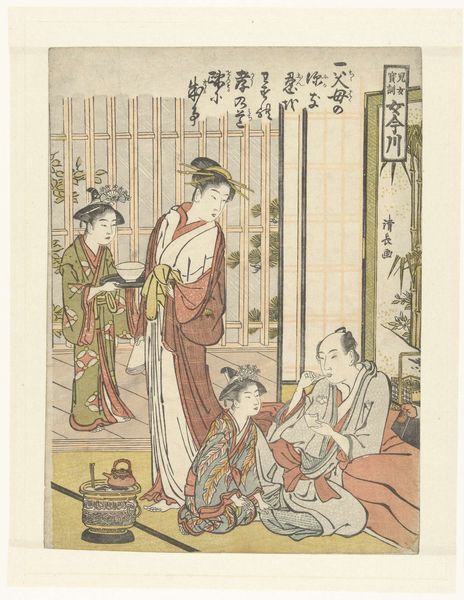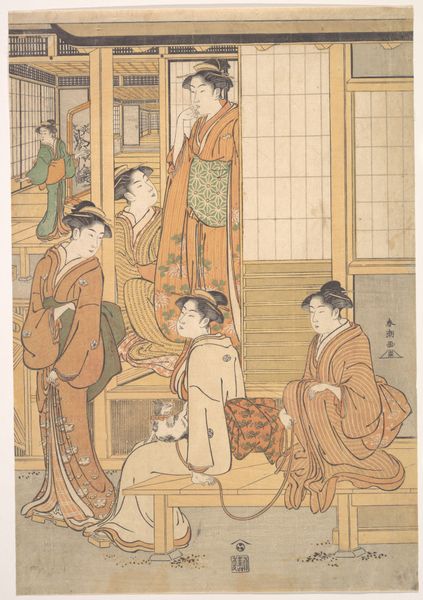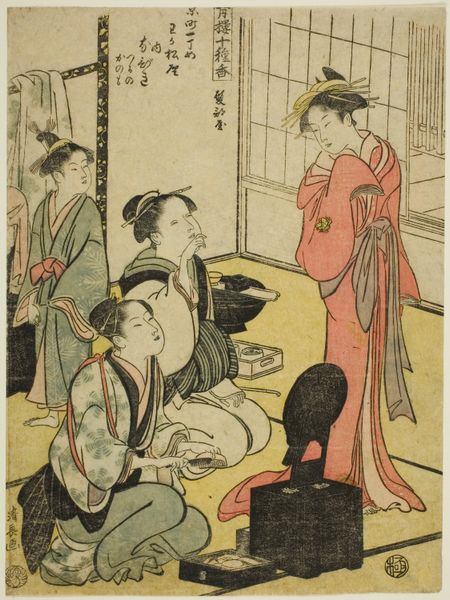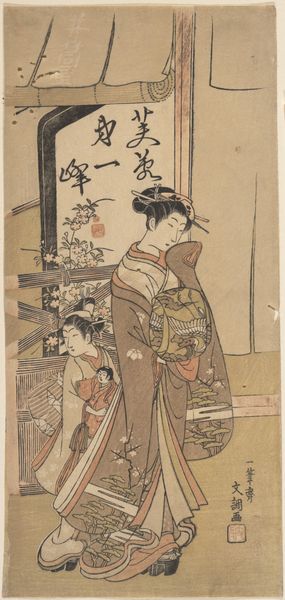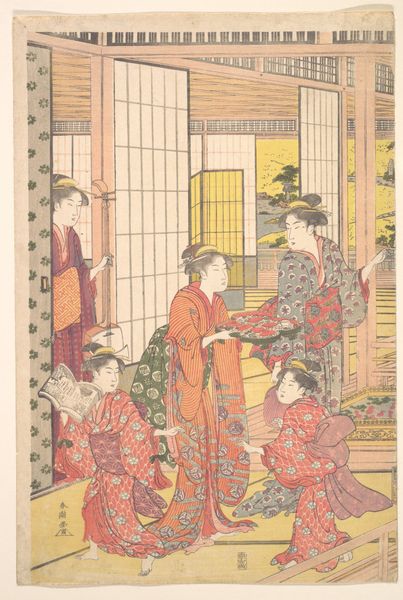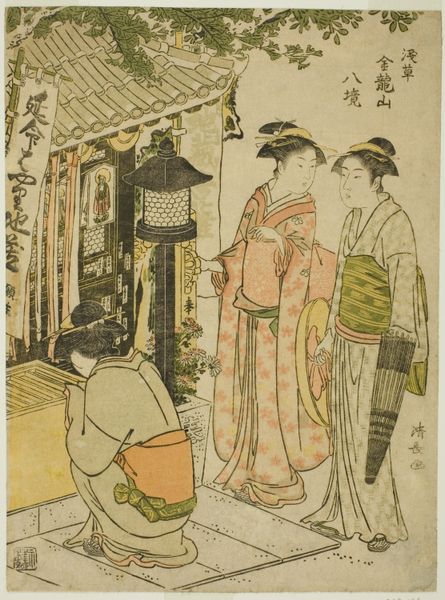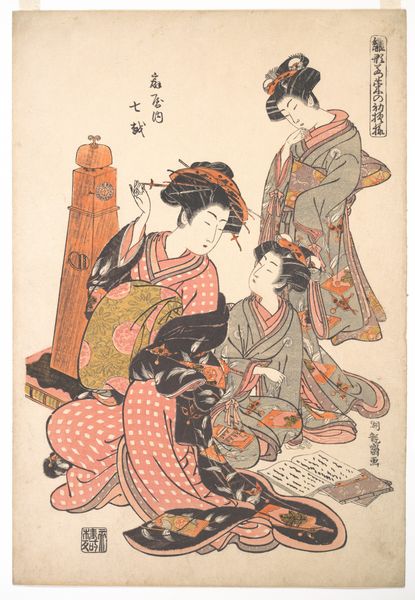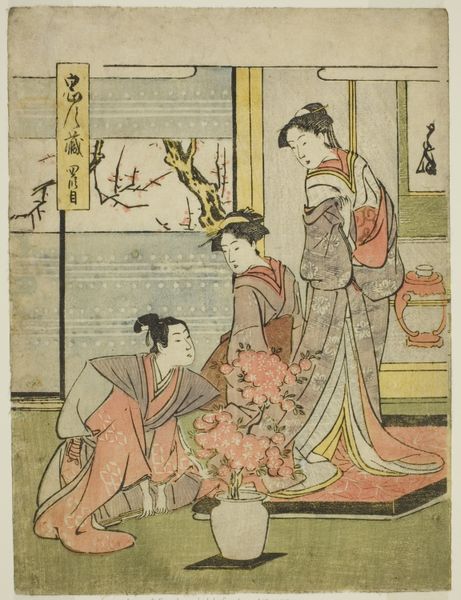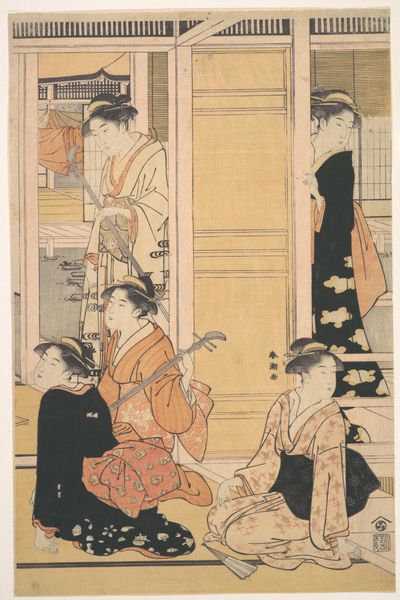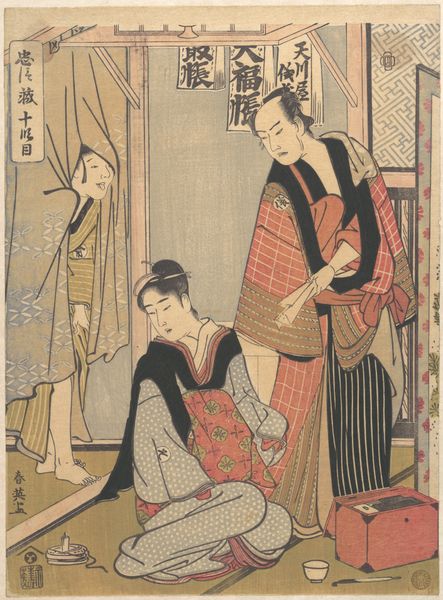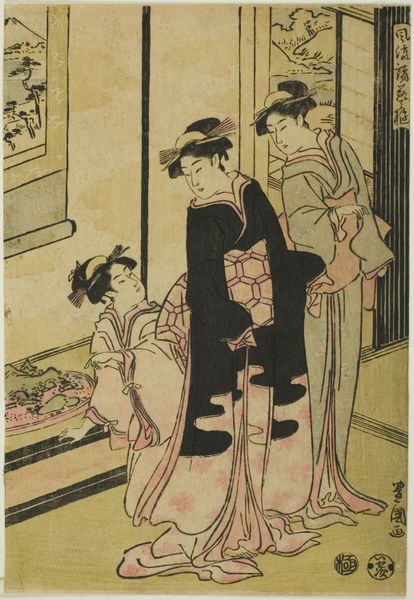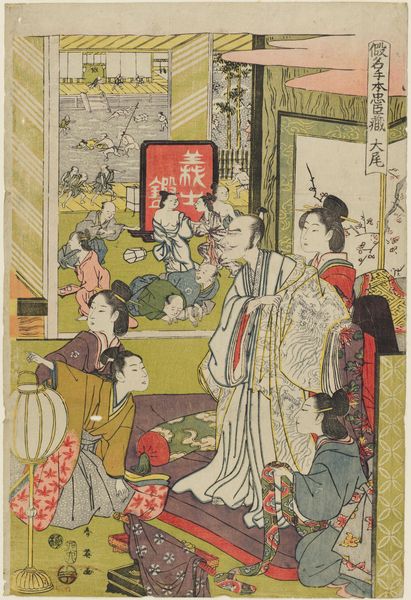
# print
#
asian-art
#
sketch book
#
ukiyo-e
#
figuration
#
genre-painting
Dimensions: H. 10 1/4 in. (26 cm); W. 7 1/2 in. (19.1 cm)
Copyright: Public Domain
Editor: We're looking at "Forgetting Filial Piety," a print made sometime between 1771 and 1791 by Torii Kiyonaga. The scene feels quite intimate; a snapshot of daily life. The title, though, gives me pause. What’s your interpretation of this work? Curator: The title "Forgetting Filial Piety" invites a crucial lens to this work – the social expectations placed upon people, specifically, here, familial duty during the Edo period. Does this image of domesticity celebrate or critique those expectations, given how present such themes were in art’s public role at the time? Editor: That’s interesting. I initially saw the image as merely documenting a private scene. Are you suggesting Kiyonaga may have been making a more subversive statement? Curator: Consider how the Ukiyo-e genre served as a popular form of entertainment. Does the apparent normality depicted here subtly challenge the traditional ideals, or simply mirror societal norms? We should look at it as less of a private 'snapshot' as you called it, but as an exercise in presenting a very common domestic life scene. Was Kiyonaga attempting a light commentary or, indeed, a faithful, even bland, retelling? Editor: I guess it depends on how the audience at the time would have reacted to it, doesn’t it? Would they have seen this relaxed scene as a rejection of responsibility, or as acceptable leisure time? Curator: Exactly! And that's where the role of museums and collections like the Met comes in: to allow contemporary viewers, removed from that original context, the tools to attempt answering such questions. Considering the production of this artwork, it certainly circulated to and was probably made for the rising middle classes. Do you think their view of familial roles might have differed from older aristocratic views? Editor: That makes a lot of sense. I had assumed the title was ironic, highlighting the relaxed nature of the scene, but you've really shifted my perspective to thinking about how socio-political context shapes the meaning. Curator: Indeed. Looking beyond the aesthetics allows us to appreciate the intricate layers within even seemingly simple works.
Comments
No comments
Be the first to comment and join the conversation on the ultimate creative platform.
